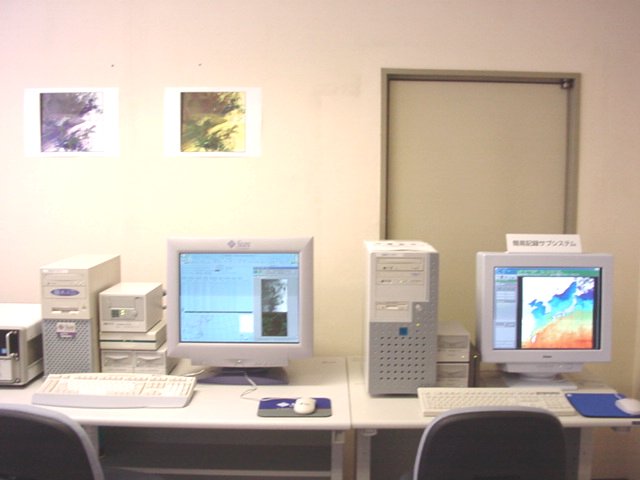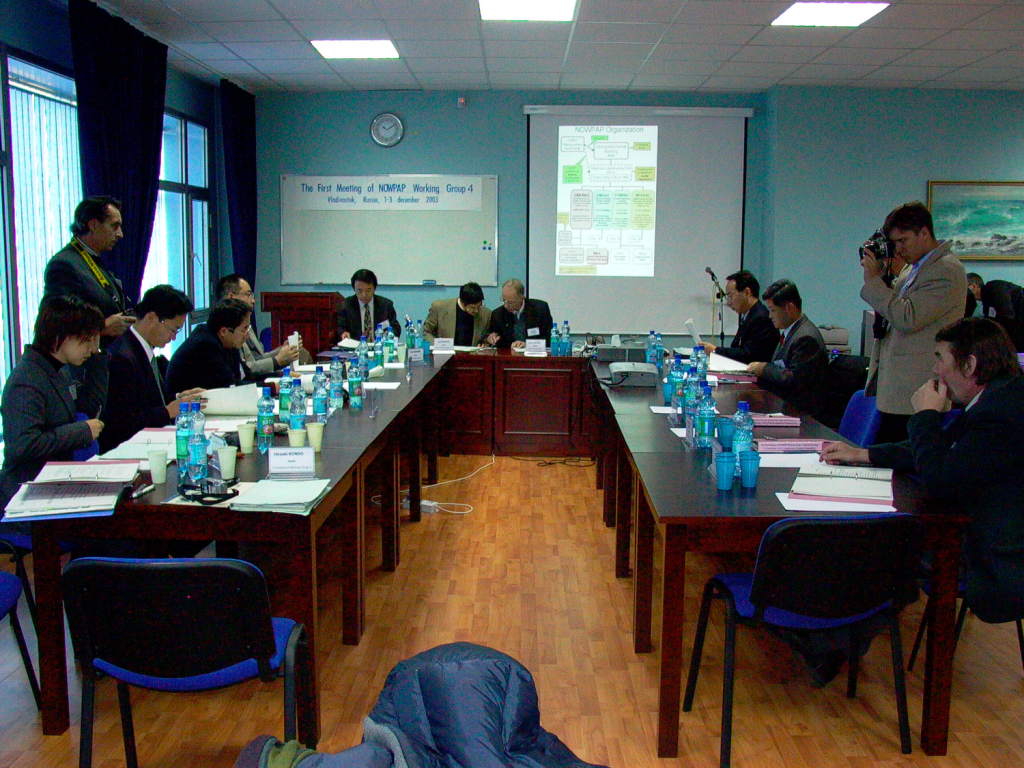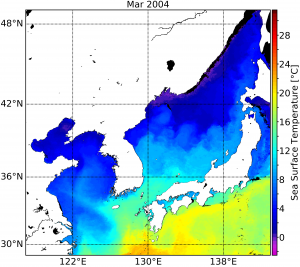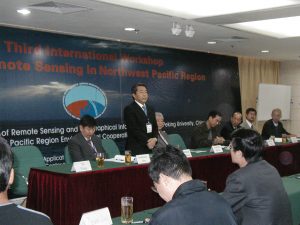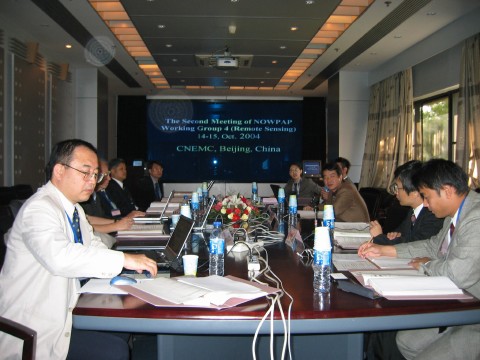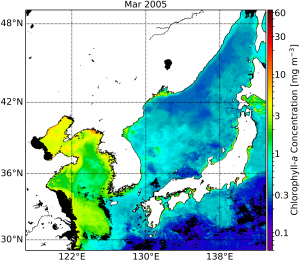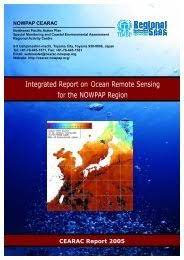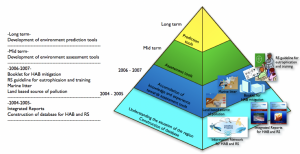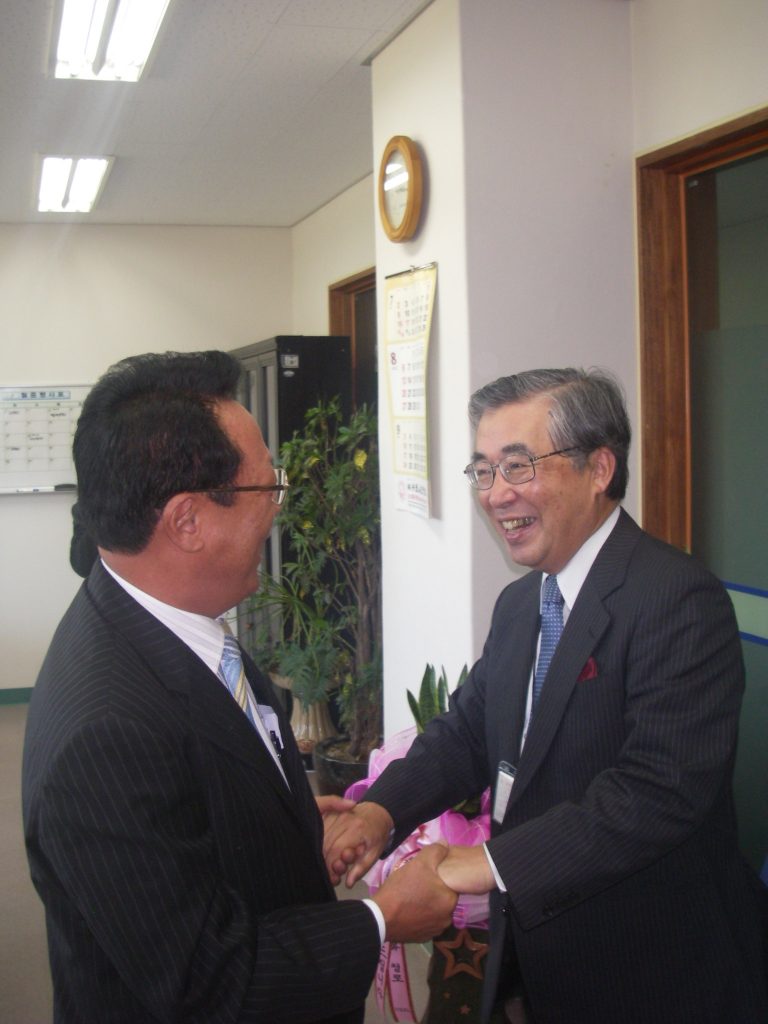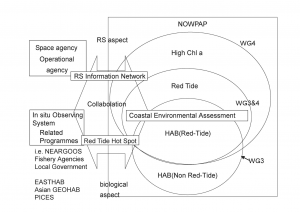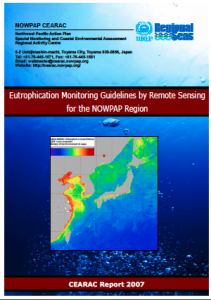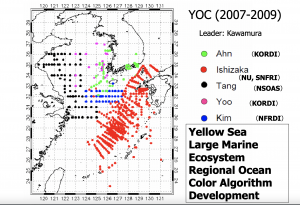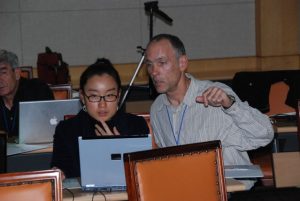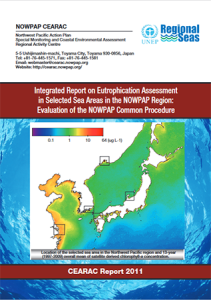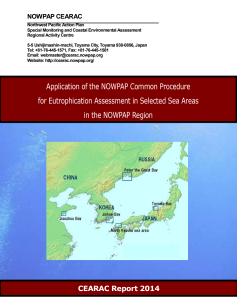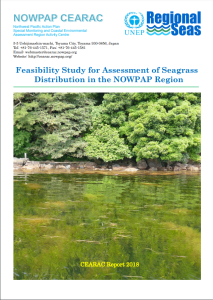
Adoption of Northwest Pacific Action Plan (NOWPAP)
The Plan of Action for the Protection, Management and Development of the Marine and Coastal Environment in the Northwest Pacific Region (121-143°E, 33-52°N) (NOWPAP) was adopted by Japan, China, Korea and Russia in September 1994 as one of the Regional Seas Action Plans of the United Nations Environment Programme (UNEP).
The 1st International Workshop on Remote Sensing of Marine Environment in the Northwest Pacific Region
The 1st International Workshop on Remote Sensing of Marine Environment in the Northwest Pacific Region was held in Toyama, Japan, organized by the Ministry of the Environment of Japan and NPEC.
Study on the establishment of a marine environment monitoring system to promote NOWPAP
As a contract work from the Ministry of the Environment of Japan, NPEC took the lead in compiling the results of a study on the establishment of a marine environment monitoring system for the purpose of promoting NOWPAP. (Study on the marine environment monitoring system in 2000)
The 2nd International Workshop on Remote Sensing of Marine Environment in the Northwest Pacific Region
The 2nd International Workshop on Remote Sensing of Marine Environment in the Northwest Pacific Region was held in Toyama, Japan, organized by the Ministry of the Environment of Japan and NPEC.
The 1st meeting of NOWPAP Working Group4
NOWPAP Working Group 4 (WG4) was established to implement activities rerated remote sensing of the marine and coastal environment and the first meeting was held in Vladivostok, Russia served by NOWPAP Special Monitoring and Coastal Environmental Assessment Activity Centre (CEARAC) as the secretariat. The meeting was attended by experts in remote sensing of marine environment selected from NOWPAP member states, and the first discussions were held on the use of NOWPAP and marine environmental remote sensing technology.
For more detailed information, please visit the CEARAC website.
The 2nd Meeting of NOWPAP Working Group4
The 2nd Meeting of NOWPAP Working Group 4 was held in Beijing, China. The meeting reviewed the progress of National Reports summarized the status of the Marine Environment Remote Sensing in NOWPAP member states and discussed the integrated report that further summarized the national reports.
For more detailed information, please visit the CEARAC website.
National Reports of Ocean Remote Sensing in the NOWPAP Region and Integrate Report on Ocean Remote Sensing for the NOWPAP Region
Each of the NOWPAP member states made reports on their use of ocean remote sensing ( China / Japan / Korea / Russia), and based on these reports, CEARAC prepared and published the integrated report for the NOWPAP region.
The 3rd Meeting of NOWPAP Working Group4
The 3rd Meeting of NOWPAP Working Group 4 was held jointly with the meeting of NOWPAP Working Group 3 in Toyama, Japan. The meeting discussed Mid to long term strategy to promote CEARAC activities.
For more detailed information, please visit the CEARAC website.
The 4th International Workshop on Remote Sensing of the Marine Environment in the Northwest Pacific Region
The 4th International Workshop on Remote Sensing of the Marine Environment in the Northwest Pacific Region was co-organized by NPEC and Pukyong National University in Busan, Korea. It was proposed that experts from Working Group 3 (Red Tide/Harmful Algae) and Working Group 4 (Ocean Remote Sensing) should jointly work on eutrophication status assessment.
The 1st NOWPAP training course on Remote sensing data analysis
The 1st NEAR-GOOS – NOWPAP joint training course on remote sensing data analysis was held at Nagasaki University, Nagasaki, Japan.
For more details, please visit the CEARAC website.
Eutrophication Monitoring Guidelines by Remote Sensing for the NOWPAP Region
“Eutrophication Monitoring Guidelines by Remote Sensing for the NOWPAP Region” has been developed.
The guidelines are aimed at coastal managers in local governments and professional researchers to translate satellite remote sensing into information and tools that are useful for monitoring of eutrophication, one of the most severe and widespread environmental problems in the NOWPAP region.
YSLME Ocean Color Project
In the project of the Global Environment Fund (GEF), the United Nations Development Programme (UNDP), and the Yellow Sea Regional Marine Ecosystem (YSLME), a project on sea color remote sensing was initiated. This was the starting point for the development of algorithms based on the characteristics of the Yellow Sea, with researchers in sea color remote sensing from Japan, China, and Korea sharing observation data from each country.
The 2nd NOWPAP training course on Remote sensing data analysis
The 2nd NOWPAP training course on Remote sensing data analysis was held at Cheju National University, Jeju, Korea.
For more detailed information, please visit the CEARAC website.
NOWPAP Common Procedure
In order to assess the eutrophication status in the NOWPAP region, CEARAC developed Procedures for assessment of eutrophication status including evaluation of land-based sources of nutrients for the NOWPAP region.(NOWPAP Common Procedure).
Case Study Reports on Assessment of Eutrophication Status in selected sea areas
Case studies using the NOWPAP Common Procedures (2009) were conducted in selected sea areas of the NOWPAP region where water quality deterioration and red tides caused by eutrophication have occurred.
Changjiang (Yangtze) River Estuary and its Adjacent Area, China / Northwest Kyushu sea area, Japan / Toyama Bay, Japan / Jinhae Bay, Korea / Peter the Great Bay, Russia
The 3rd NOWPAP training course on Remote sensing data analysis
The 3rd NOWPAP training course on Remote sensing data analysis was held at the Far Eastern Federal University in Vladivostok, Russia.
For more detailed information, please visit the CEARAC website.
Integrated Report on Eutrophication Assessment in Selected Sea Areas in the NOWPAP Region
Integrated Report on Eutrophication Assessment in Selected Sea Areas in the NOWPAP Region has been developed.
The eutrophication status in selected sea areas in the NOWPAP region was assessed through case studies using the NOWPAP Common Procedures (2009), and the validity of the procedures was evaluated.
Integrated Report on Ocean Remote Sensing for the NOWPAP Region: Towards Assessment of the Marine and Coastal Environment
“Integrated Report on Ocean Remote Sensing for the NOWPAP Region: Towards Assessment of the Marine and Coastal Environment” has been published.
The 2005 Integrated Report was updated by adding the latest information on remote sensing (RS) technology in NOWPAP member states.
NOWPAP Common Procedure 2013 Revised Edition
Based on the lessons learned from the case studies conducted in the 2010-2011 biennium, the NOWPAP Common Procedure (2009) was revised.
Case Study Reports on Assessment of Eutrophication Status in selected sea areas
Using the NOWPAP Common Procedure 2013 Revised Edition, case studies to assess the eutrophication status were conducted in some selected sea areas in the NOWPAP member states.
Jiaozhou Bay, China / North Kyushu Sea Area, Japan / Toyama Bay, Japan / Jinhae Bay, Republic of Korea / Peter the Great Bay, Russia
The 4th NOWPAP training course on Remote sensing data analysis
The 4th NOWPAP training course on Remote sensing data analysis was held at Ocean University of China in Qingdao, China.
For more detailed information, please visit the CEARAC website.
Application of the NOWPAP Common Procedure for Eutrophication Assessment in Selected Sea Areas in the NOWPAP Region
“Application of the NOWPAP Common Procedure for Eutrophication Assessment in Selected Sea Areas in the NOWPAP Region” was published.
This report introduces re-assessment of the eutrophication status in some selected sea areas in the NOWPAP region, using the NOWPAP Common Procedure 2013 Revised Edition (see Annex C), which includes two steps: Screening procedure to detect evidence of eutrophication with the minimum required parameters and Comprehensive procedure to assess the eutrophication status in detail.
NOWPAP Common Procedure 2015 Revised Edition
Procedures for assessment of eutrophication status including evaluation of land-based sources of nutrients for the NOWPAP region (the NOWPAP Common Procedure 2015 Revised Edition) have been developed (CEARAC Project).
To assess the eutrophication status of the entire NOWPAP sea area, trial application of the Screening procedure of the NOWPAP Common Procedure 2013 Revised Edition to the entire NOWPAP region was conducted. When implementing this activity, the required parameters in the procedure were reviewed, and one of them (Nutrients input and their residence time) was changed to Long-term Trend in Chemical Oxygen Demand (COD) or Total Organic Carbon (TOC) symptoms.
Case studies on seagrass mapping in the selected sea areas in the NOWPAP region
Case studies on seagrass mapping in the selected sea areas in the NOWPAP region were conducted.
The 1st NOWPAP CEARAC Expert Meeting on Eutrophication Assessment in the NOWPAP region
The 1st NOWPAP CEARAC Expert Meeting on Eutrophication Assessment in the NOWPAP region was held in Qindao, China.
For more detailed information, please visit the CEARAC website.
Feasibility study towards assessment of seagrass distribution in the NOWPAP region
“Feasibility study towards assessment of seagrass distribution in the NOWPAP region” has been developed (CEARAC Project).
After applying “A manual for seagrass and seaweed beds distribution mapping with satellite images” (2015) to case studies in the selected sea areas in each NOWPAP member state, the feasibility of assessing seagrass distribution in the entire NOWPAP region was investigated by collecting information and conducting literature review in each member state.
This report includes a summary of the case studies.
Building the Marine Environmental Watch System
The Marine Environmental Watch System cloud GIS Prototype has been built.
Removal of the direct receiving antenna of the Marine Environmental Watch System
The Marine Environmental Watch System direct receiving antenna was removed from Toyama Environmental Science Research Center
The 2nd NOWPAP CEARAC Expert Meeting on Eutrophication Assessment in the NOWPAP region
The 2nd NOWPAP CEARAC Expert Meeting on Eutrophication Assessment in the NOWPAP region was held in Vladivostok, Russia.
For more detailed information, please visit the CEARAC website.
Formulation of Development and Operation Plan for the Marine Environmental Watch System
NPEC has formulated the ” Development and Operation Plan for the Marine Environmental Watch System: Considerations for Cloud Computing” (contract work for the Ministry of the Environment, Japan).
NOWPAP Eutrophication Assessment Tool introduced
The NOWPAP Eutrophication Assessment Tool (NEAT) was introduced on the UNEP website.
Development of a tool for mapping seagrass distribution in the NOWPAP region
A tool for mapping seagrass distribution using cloud computing technology has been developled.
Migration to a cloud environment
The Marine Environmental Watch System has been fully migrated to a cloud environment, and has started to automatically process and provide data on satellite chlorophyll-a concentration data using an algorithm tuned for the NOWPAP region.
Provision of SGLI ocean color data sets
Provision of AXA SGLI ocean color data sets has started.
The 5th NOWPAP training course on Remote sensing data analysis
The 5th NOWPAP training course on Remote sensing data analysis was held in two webinars.
For more detailed information, please visit the CEARAC website.
The 3rd CEARAC Experts Meeting on Eutrophication Assessment in the NOWPAP Region
The 3rd CEARAC Experts Meeting on Eutrophication Assessment in the NOWPAP Region was held online.
For more detailed information, please visit the CEARAC website.


